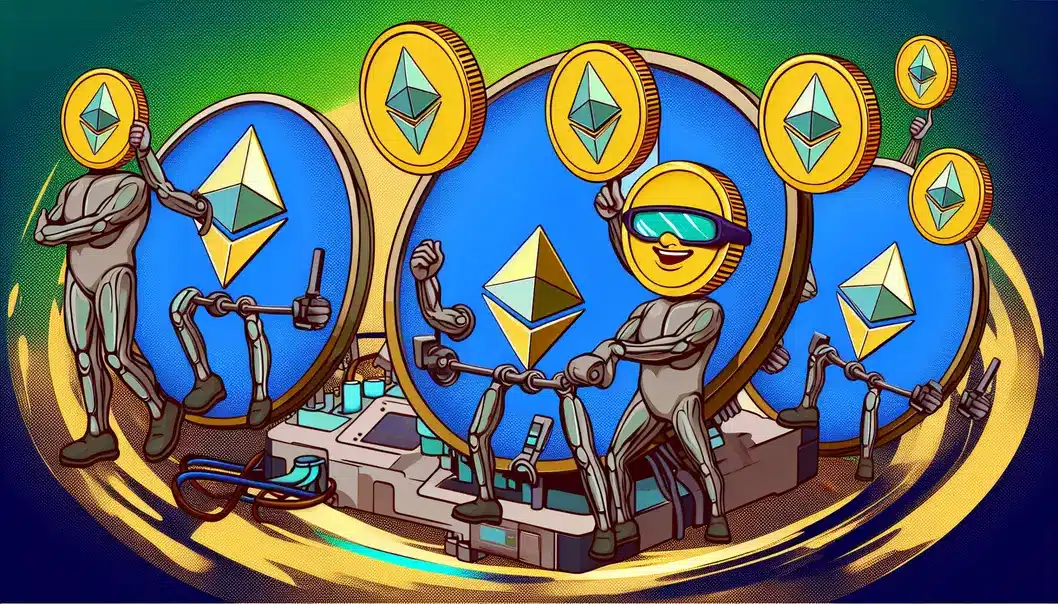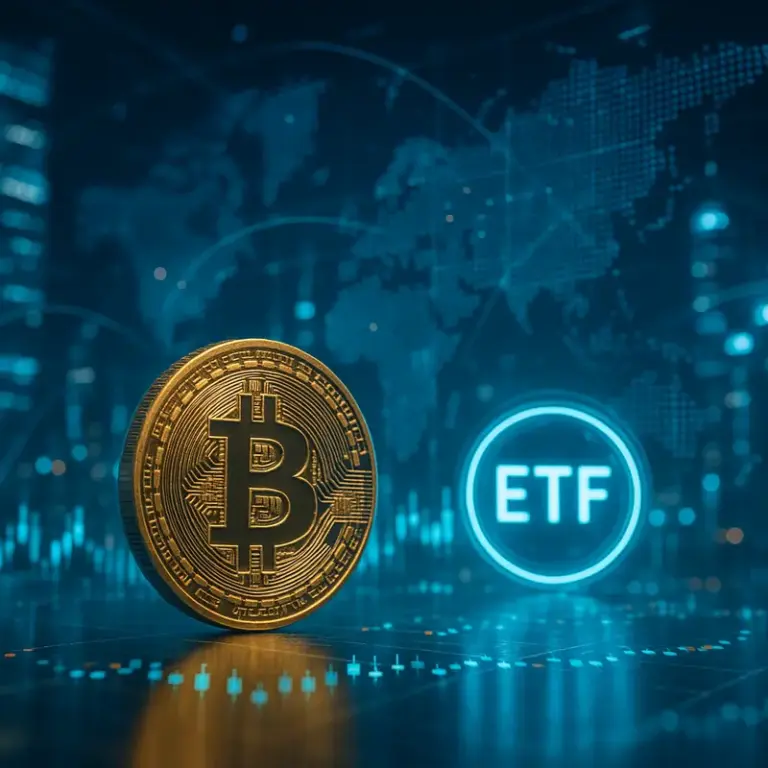Welcome to 2025, where Ethereum is ten years mature and still holding onto its youthful innovation vibes. From speeding up Layer 2 to attracting the institutional big guns, Ethereum is wearing more hats than a blockchain could dream of! We’ll dive into the twisty world of scaling solutions, the dance of institutional adoption, and the melodramatic soap opera of regulations, all while keeping our spirits as high as Ethereum’s potential.
Unleashing Ethereum’s Potential: Layer 2 Scaling Solutions in 2025

In 2025, Ethereum stands on the shoulders of Layer 2 scaling solutions, crafting a network capable of handling increased demands while promising enhanced user experiences. These solutions operate atop the Ethereum blockchain, ingeniously processing transactions off-chain before settling them on the main chain. This strategic shift not only alleviates congestion but also significantly cuts down transaction costs, ensuring the Ethereum network remains both accessible and efficient.
Layer 2 solutions are meticulously designed to bolster Ethereum’s scalability without veering away from its foundational principles of security and decentralization. At the forefront of these technologies are ZK-Rollups and Optimistic Rollups, each contributing unique benefits that enhance the network’s capacity.
ZK-Rollups are particularly transformative. They leverage zero-knowledge proofs to validate transactions privately and securely off-chain, effectively bundling numerous transactions into a singular one. This bundling reduces the network load and enhances efficiencies. With the certification through cryptographic proofs, transaction finality is immediate, showcasing ZK-Rollups as rapid and privacy-focused, promising a swifter transaction process than their Optimistic counterparts.
Optimistic Rollups, conversely, adopt a straightforward narrative—assuming the validity of transactions by default and verifying only when contested. This innate simplicity quickens their deployment within existing frameworks. While they might not rival the speed of ZK-Rollups in transaction finality, Optimistic Rollups offer flexibility that supports a broader range of decentralized applications.
Projects such as Linea are notable within this ecosystem. By employing ZK-Rollups, Linea elevates scalability and quick integration for developers, solidifying its promise for Ethereum’s progression. MegaETH, another contender highlighted by Ethereum co-founder Joe Lubin, stands testament to the burgeoning innovations within Layer 2 spaces.
Despite their advancements, Layer 2 solutions like Linea and MegaETH face hurdles. Interoperability proves a significant barrier, as seamless asset movement between Layer 1 and Layer 2 remains cumbersome, although intent-driven bridges like Across are paving the way for improvements. Furthermore, some investors express concerns about Layer 2 networks siphoning economic value from the Ethereum base layer—a perception exacerbated by Ethereum’s upgrades like Dencun, which slashed gas fees, impacting Layer 1 revenue.
As Ethereum marches towards the future, Layer 2 innovations such as the Pectra Upgrade and Validiums spell an era of enhanced capabilities, with Validiums promising Solana-level speeds with sub-cent fees. Additionally, new standards like EIP-7702 aspire to revolutionize wallet functionalities, endowing them with improved efficiency and security.
In this landscape of relentless evolution, Layer 2 solutions are not just adjunct technologies; they are the cornerstone of Ethereum’s sustainable growth, ensuring that the platform remains a resilient and compelling choice for developers and users alike. The future of Ethereum, empowered by these scaling solutions, gleams with potential, setting the stage for broader adoption and innovation.
Institutional Adoption: A Pillar in Ethereum’s 2025 Resilience

As the Ethereum ecosystem steps boldly into 2025, institutional adoption emerges as one of its most transformative forces, redefining its reach and robustness. The strategic influx of institutional investment is not merely a trend—it’s a structural evolution that bolsters Ethereum’s standing as a cornerstone in the digital financial marketplace. This shift is characterized by significant interventions from major financial entities, a burgeoning interest in decentralized finance (DeFi), and the solidification of Ethereum-based financial products.
In the intricate dance of adoption, infrastructure development plays a starring role. Financial juggernauts such as BlackRock, Fidelity, and Goldman Sachs have paved new paths by launching Ethereum exchange-traded funds (ETFs). These financial instruments serve as bridges, connecting traditional and crypto investors. Their regulated nature allows retail and institutional investors to engage with Ethereum within the comforting boundaries of familiar financial systems. However, these ETFs’ absence of staking rewards highlights an area ripe for the future innovation of value mechanisms.
Moreover, regulatory clarity stands as a beacon for institutional investors. As governments in the U.S. and EU progress towards comprehensive frameworks, akin to the Markets in Crypto-Assets Regulation (MiCA), the fog of ambiguity lifts. This clarity not only assuages apprehension but also catalyzes digital asset growth, making it a vital pivot for Ethereum’s broader acceptance.
The institutional embrace extends profoundly into DeFi and stablecoins. Here, the demand for staking, lending, and derivatives continues to expand, while stablecoins rise in prominence for their transactional efficiencies and yield potentials. Their stability offers a counterbalance to Ethereum’s inherent volatility, a crucial factor in attracting conservative capital.
Institutional involvement intuitively fosters market stability and liquidity. These investments are pivotal, ensuring Ethereum’s market elasticity and resilience, thereby nurturing a conducive environment for both traditional and new-age financial systems to flourish. Additionally, Ethereum’s successful transition to Proof-of-Stake (PoS) further embellishes its credentials—enhancing energy efficiency and reinforcing its allure for eco-conscious stakeholders.
Despite burgeoning institutional activity aligning with Ethereum’s promising technological innovations, certain challenges persist. A disconnect surfaces between strategic institutional commitments and spot market investor sentiments, often resulting in an observable diaspora within Ethereum Spot ETFs. Additionally, the specter of price volatility looms, tethering high-value predictions like Ethereum hitting the $10,000 mark to the turbulent seas of market sentiment and economic conditions.
Yet, these very challenges are interwoven seamlessly with immense opportunities for expansion. Emerging interest in tokenized assets and broader DeFi platforms heralds a new frontier for Ethereum, edging it closer to mainstream adoption and integration within entrenched financial systems.
In sum, institutional adoption acts as a formidable pillar underpinning Ethereum’s expansion and evolution. As regulatory frameworks solidify and more institutions engage, Ethereum is not just poised to maintain its leadership role within the crypto landscape but is set to redefine the boundaries of global financial systems. For those interested in a deeper exploration of Ethereum’s future and investment opportunities, further guidance can be found in this comprehensive investor’s guide.
Innovative Strides and Regulatory Clarity in Ethereum’s 2025 Ecosystem

In 2025, Ethereum stands as a beacon of innovation within the blockchain sphere, primarily driven by technological advancements and evolving regulatory landscapes. The monumental transition from Proof-of-Work (PoW) to Proof-of-Stake (PoS), commonly referred to as “The Merge,” has marked a definitive turning point for the platform. This shift has drastically slashed energy consumption by over 99%, aligning Ethereum with global sustainability goals. As an added benefit, it introduced a deflationary mechanism through EIP-1559, which systematically reduces the ETH supply by burning a portion of transaction fees.
Ethereum 2.0, as an ongoing upgrade, is focused on enhancing scalability and security while improving the overall user experience. The deployment of Layer 2 (L2) solutions, such as rollups, significantly augments transaction throughput and minimizes costs. These developments are pivotal in making Ethereum more attractive to decentralized applications (dApps) and enterprises, setting the stage for broader institutional adoption.
Amid technological leaps, Ethereum has also made strides in usability with improvements in wallet functionality and validator staking via proposals like EIP-7251 and EIP-7702. Such enhancements not only simplify user interaction but also bolster security, paving the way for increased adoption across various industries.
On the regulatory front, Ethereum is navigating an intricate landscape that is progressively clearer and more coordinated. Authorities worldwide are spearheading initiatives to bolster consumer protection and address concerns related to anti-money laundering (AML) and combating the financing of terrorism (CFT). Regulatory clarity, especially in frameworks like the European Union’s Markets in Crypto-Assets (MiCA) regulation, is instrumental in fostering trust and encouraging institutional investment.
Despite Ethereum’s inherently decentralized nature posing challenges in regulatory compliance, its vast global influence necessitates adaptable and innovative solutions. Regulatory frameworks committed to harmonization are expected to ease cross-border transactions, fostering Ethereum’s integration into global financial systems.
Reiterating Ethereum’s position as a frontrunner in the blockchain revolution, future growth will hinge on its ability to leverage technological enhancements while aligning with global regulatory standards. These parallel evolutions in technology and regulation not only spur Ethereum’s adoption but also ensure its enduring relevance and stability in the increasingly competitive environment of blockchain innovation. To further explore Ethereum’s journey and its potential impact on investors, delve into this comprehensive guide.
Final thoughts
In 2025, Ethereum is not just surviving but thriving, thanks to its ability to laugh in the face of challenges while embracing innovation. Whether by cruising through Layer 2 highways, impressing the suits, or navigating the legal labyrinth, Ethereum’s journey is one for the history books—comedy edition.
Ready to elevate your business with cutting-edge automation? Contact Minh Duc TV today and let our expert team guide you to streamlined success with n8n and AI-driven solutions!
Learn more: https://ducnguyen.cc/contact/
About us
Minh Duc TV is a forward-thinking consulting firm specializing in n8n workflow automation and AI-driven solutions. Our team of experts is dedicated to empowering businesses by streamlining processes, reducing operational inefficiencies, and accelerating digital transformation. By leveraging the flexibility of the open-source n8n platform alongside advanced AI technologies, we deliver tailored strategies that drive innovation and unlock new growth opportunities. Whether you’re looking to automate routine tasks or integrate complex systems, Minh Duc TV provides the expert guidance you need to stay ahead in today’s rapidly evolving digital landscape.





